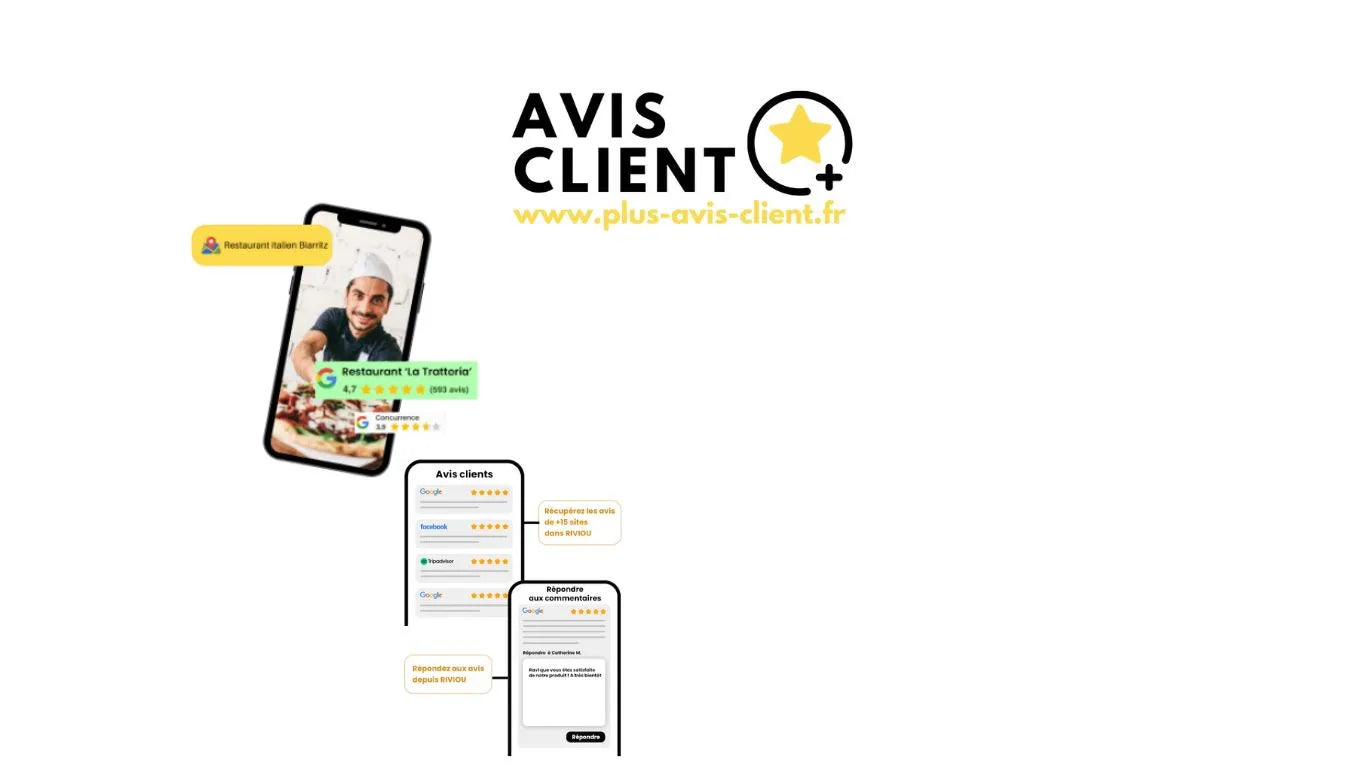
Highlight frequently asked questions in customer reviews
How to optimize customer review analysis?
Understanding customer feedback is essential to growing your business. A thorough analysis of customer feedback not only identifies recurring themes, but also uncovers specific customer expectations. By adopting semantic analysis tools , you can quickly identify common patterns in user feedback. These themes then serve as a basis for extracting frequently asked questions (FAQs ), which are essential for improving customer satisfaction.

Use of semantic analysis tools
Semantic analysis tools allow you to analyze customer reviews by highlighting recurring phrases and expressions. Using these technologies, you can group reviews by type, making it much easier to understand customer needs.
By classifying feedback by type and creating dynamic dashboards, you simplify your decision-making process. This helps you quickly identify action priorities and focus on key areas.
Taking a proactive approach to feedback analysis helps you avoid past mistakes. By incorporating this method into your strategy, you can turn negative perceptions into positive opportunities.
These tools are essential for extracting precise insights , which will allow you to adjust your products or services while strengthening customer satisfaction .
Using Frequently Asked Questions
Analyzing emerging questions within customer reviews allows you to create specific and relevant FAQs. These answers, tailored to the most common concerns, simplify the user experience.
By tracking how customer opinions evolve over time, you can anticipate their changing expectations and maintain a constant fit between your offerings and their needs.
Designing an FAQ based on identified patterns simplifies customer service. Users can immediately find answers to their questions thanks to these intelligently structured resources.
Updated regularly based on feedback, the FAQ helps strengthen customer loyalty and build trust with your brand.
Impact on customer loyalty
Strategically integrating customer feedback has a direct impact on your customer satisfaction. By tailoring your offerings based on the insights gathered, you can precisely meet their expectations and foster a stronger connection with your audience.
Taking consumer feedback into account helps you identify areas for improvement and establish clear priorities in your actions, making your decisions more effective.
This approach strengthens your brand image by showing that you actively listen and respond to user feedback. By doing so, you improve the customer experience and establish positive momentum.
Ultimately, this process optimizes both customer satisfaction and loyalty , while delivering real added value to your business.
Targeted FAQ and handling of negative reviews
A well-designed FAQ helps anticipate common questions, making it easier for your customers to access information. Turning negative reviews into opportunities for improvement helps build trust and ensure lasting customer satisfaction.
Anticipation of customer needs
Analyzing customer feedback helps you create targeted FAQs that proactively address recurring needs. This process not only anticipates customer expectations, but also reduces the volume of similar questions received by your customer service.
By integrating FAQ answers across different channels (website, emails, chatbots), you expand your reach and maximize the impact of your solutions.
Regularly updating your FAQ ensures that your answers remain relevant and aligned with the ever-changing expectations and concerns of your customers.
Responding quickly to even the most sensitive questions demonstrates your commitment to an exceptional customer experience .
Handling negative reviews
Negative reviews are a real opportunity to improve your services. By handling them effectively, you can both optimize your internal processes and improve your online reputation .
Classifying and prioritizing these reviews allows you to identify and resolve the most common issues first, in a structured and thoughtful manner.
Sharing your corrective actions with your customers demonstrates transparency and commitment, which strengthens the relationship of trust over the long term.
Update and relevance of FAQs
Keeping your FAQ up to date with the most frequent customer feedback ensures its effectiveness and relevance. This directly translates to an improvement in the overall customer experience.
Integrating new solutions based on recent negative feedback adds a proactive approach to your FAQ, highlighting your ongoing engagement with your consumers.
By identifying and correcting flaws highlighted by customer reviews, you promote continuous optimization and demonstrate valuable adaptability.
Creating accurate and easy-to-access resources empowers your customers, reducing the burden on your customer service and improving their overall satisfaction.
Semantic analysis tools to identify recurring problems
Advanced semantic analysis tools not only allow you to identify recurring patterns in customer reviews, but also to improve the quality of your responses by adjusting your services according to the identified needs.
Identification of common patterns
These semantic analysis tools categorize customer feedback, making it much easier to identify frequently asked questions and issues. By grouping comments into specific themes, they provide a clearer picture of expectations.
This fine-grained organization allows for precise categorization of feedback, opening the way to concrete and relevant insights to guide improvements to your services.
- Pattern Detection : Easily identify recurring trends with visual dashboards .
- Actionable Insights : Highlight gaps by analyzing feedback according to a structured typology.
- Optimized responsiveness : Intelligently prioritize issues to be resolved using semantic analysis .
Using this data to tailor your services significantly improves customer satisfaction.
Recurring problems and solutions
Identifying and understanding recurring problems allows you to more effectively adapt responses and interventions. With these tools, you can offer solutions that truly meet your customers' expectations.
Customer feedback analytics simplify your processes by directly integrating solutions from feedback .
Continuous and rigorous evaluation of feedback allows you to identify major trends. This proactive approach encourages constant improvement of your services.
By combining in-depth semantic analysis with rapid adaptation, you are able to deliver an enriched and personalized customer experience.
Creation of targeted FAQs for increased customer satisfaction
Designing FAQs to answer frequently asked questions not only demonstrates your customers' needs, but also strengthens customer relationships and creates lasting engagement with your audience.
Development and implementation
Creating targeted FAQs relies on in-depth feedback analysis. By directly integrating customer feedback into the answers, you ensure their relevance and effectiveness.
- Issue Prioritization : Identify and prioritize issues based on frequency to provide quick and tailored solutions.
- Solution Exploration : Provide concrete answers based on detailed analysis of feedback .
- Regular updates : Continuously adapt FAQs to meet changing consumer expectations.
These actions help reduce repetitive requests while optimizing the efficiency of your customer service.
By regularly updating your FAQs, you offer flexible, dynamic resources that are perfectly in line with the real needs of your customers.
Commitment and satisfaction
A well-designed and easily accessible FAQ builds consumer trust in your brand. It gives them confidence that their concerns can be addressed quickly.
Customer engagement increases with the satisfaction provided by immediate solutions. Providing clear and concise FAQs simplifies interactions and improves the user experience.
By making your FAQs visible on different media (website, mobile application, etc.), you multiply the points of contact, making responses to recurring requests faster and more precise.
Managing and distributing customer reviews effectively
Customer reviews are a valuable resource for increasing brand visibility and boosting conversions. When managed well and shared strategically, they can multiply their marketing impact tenfold.

Review management
To get the most out of reviews, it's crucial to structure their management effectively. Machine translation systems make these reviews accessible internationally, thus increasing your potential for influence.
- Authenticity : Use trust labels to build credibility with consumers.
- Maximum Visibility : Share trusted reviews across various digital mediums to ensure greater exposure.
- Advertising impact : Integrate this feedback into your marketing campaigns and content to enrich your messages.
- Organized Analysis : Centralize the collection and analysis of opinions in order to convert them into relevant action plans .
This process highlights customer feedback, creating real excitement around your brand.
Displaying valued reviews also helps to inform your prospects and positively influence their decision-making.
Multi-channel broadcasting
Sharing reviews widely is essential to maximize their reach . This approach can encourage conversion while facilitating the acquisition of new customers.
Focus on channel diversification to increase contact points and strengthen your presence.
Incorporating verified reviews into your campaigns amplifies the authenticity of your messages.
A proactive review analysis and dissemination cycle effectively aligns your processes with a sustainable growth and engagement strategy.
Analyzing reviews to improve customer experience
Analyzing customer reviews in depth provides a valuable opportunity to develop a more personalized approach and adjust your services based on the feedback received. This work helps improve your company's customer interaction strategy, resulting in a better overall user experience.
Continuous improvement strategy
Use customer satisfaction metrics to measure the impact of feedback- based adjustments. This data positively influences the user experience and improves your service performance.
- Measurable results : Personalize your products or services according to customer expectations and monitor progress using KPIs .
- Continuous improvement : Modernize your processes by leveraging analyzed feedback to stay relevant.
- Constant Optimization : Develop a more efficient method of handling reviews with the aim of strengthening customer loyalty.
This approach helps adjust interactions with your customers, contributing to an enriched and lasting customer experience .
Building a strong customer relationship
Analyzing reviews allows for the segmentation of a clear and precise customer typology , thus facilitating the deployment of solutions adapted to each category.
It also encourages teams to design autonomous tools and responses to better meet needs, thereby improving overall satisfaction.
Building a positive customer experience through intelligent feedback management strengthens customers' perception of your business.
Practical application and impact
Engaging your customers through review analysis puts them at the heart of your improvement strategy, fostering a sense of belonging and closeness.
Customer service based on user feedback creates a more transparent, continuous and loyal relationship, which enhances your brand image in the long term.
https://plus-avis-client.fr/ is a practical, cost-effective customer review management platform that allows you to easily implement all customer review management processes for your business.
Success lies in your ability to quickly integrate and respond to feedback, to reduce the gap between what your customers expect and what you actually deliver.
By transforming constructive opinions into concrete actions , you create a significant competitive advantage that favorably impacts the performance of your company.

